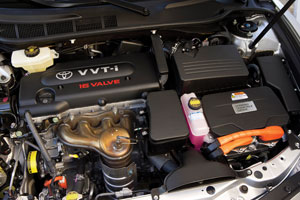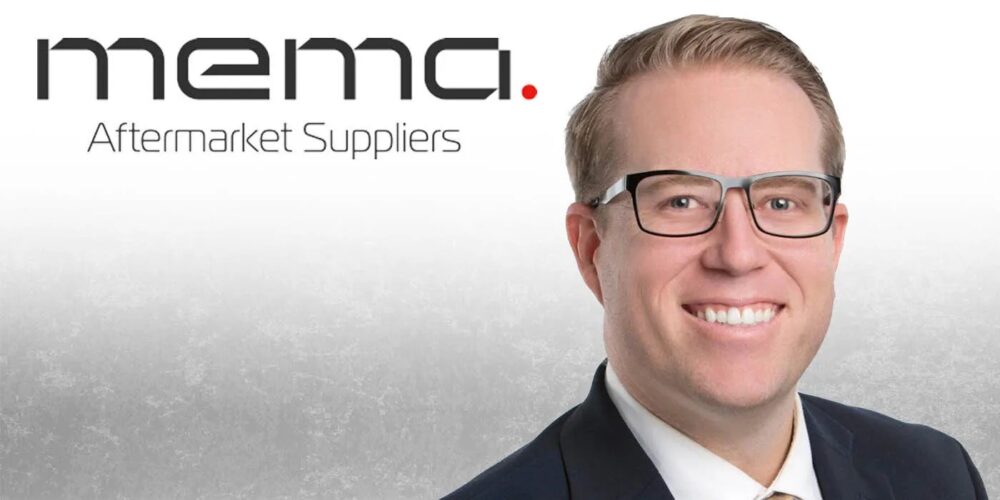At this moment, we’re entering into our third year of our Great Recession. On the one hand, our economy is building up some steam. Currently, some independents have prospered as neighboring dealerships and other independents have closed their doors forever. Others have prospered as customers decided to repair old rather than buy new.
On the other hand, the independent shop faces structural issues that also challenge our country and our industry in particular. The structural issue most affecting the independent automotive service industry is the federal government’s resolve to reduce our dependence on foreign oil. For that reason, surviving independents might well be looking at a technically new automotive service landscape. With that said, let’s look at that and some other issues that might affect the jobber/dealer relationship in 2011.
 GOING GREEN
GOING GREEN
Immediately after World War II, the United States was one of the few remaining industrial powers whose manufacturing infrastructure had been untouched by war. Our economy grew on cheap domestic oil and foreign demand for manufactured goods. Today, we find ourselves in competition with many formerly third-world countries for oil and for marketshare, both of which are the lifeblood of any economy.
Our auto industry has a checkered past in developing fuel-efficient vehicles. The Chevrolet Vega and Ford Pinto were considered by many to be dismal failures in countering the fuel-efficient Japanese cars of the 1970s. Throughout the ’80s and ’90s, many of our fuel-efficient vehicles were merely Japanese imports with domestic nameplates. Currently, our three remaining domestic manufacturers are pursing their most logical options in reducing our oil dependence by building fuel-efficient “world” cars that use a basic platform that can be modified to meet the driving requirements of other countries.
Our second option in reducing our dependence on fossil fuels is developing domestically produced hybrid and plug-in hybrid vehicles. A hybrid vehicle generally has a gasoline engine or electric motor that is mechanically connected to the drive wheels. Instead of requiring a gasoline engine to recharge its batteries, a plug-in hybrid may also allow its owner to use cheaper household electricity to perform that function.
Our third option is building an electric vehicle that runs entirely on batteries. A short driving range is the primary concern with battery-powered vehicles. The estimated driving range of the new all-electric Nissan Leaf is about 73 miles. Although the new Chevrolet Volt is generally classified as an electric vehicle, it extends its range by using a gasoline engine to help recharge its batteries.
Currently, a few independent shops have prospered by specializing in hybrid vehicle maintenance and repairs. Unlike conventional platforms, hybrids like the Toyota Prius are fully electronically controlled vehicles requiring OE tooling and information for major repair processes. Of course, a strong local market is required to support the tooling and training needed for servicing these vehicles. While many shops can perform routine oil changes and maintenance, few have gone into hybrid repair simply because the current market won’t support the required tooling and training. New electric vehicles such as the Nissan Leaf and Chevrolet Volt will, for the short-term, be supported by their dealer networks.
TELEMATICS
The word “telematics” generally indicates that a vehicle can communicate with outside correspondents via satellite. The widely advertised General Motors On-Star system provides the best example of how telematics work in the real world. First and foremost, telematics indicates where the vehicle is located at all times. For that reason, telematics can be a theft deterrent. On the other hand, some think it’s an invasion of privacy. The most prominent feature of telematics is that a local dealership can actually retrieve data from the vehicle’s powertrain management system to determine if the engine oil needs changing or which component failure might be causing a cranking, no-start condition.
While telematics is too complex to fully discuss in this space, suffice it to say that, if it becomes standard equipment for most auto manufacturers, it will be a force to be reckoned with in automotive service marketing.
Many aftermarket entities are currently discussing how the automotive aftermarket can work with vehicle telematics. Right now, many owners are not renewing their telematics service contracts. But, given the current trends in personal mobile communications and entertainment, the popularity of telematics might be on the rise.
ORIGINAL EQUIPMENT TOOLING
Beginning in 1996, the Environmental Protection Agency (EPA) mandated that auto manufacturers standardize vehicle diagnostic connectors, names of components and diagnostic trouble codes. In addition, the EPA mandated aftermarket access to exhaust emissions-related equipment and service information.
As a result, we can now use aftermarket scan tools and service information to diagnose and repair emissions-related vehicle failures and to reprogram engine management computers. But those mandates fall short when servicing today’s complex vehicle body control electronics technology.
Even with those achievements, the current challenge in most independent shops is dealing with the cost of buying OE scan tools or diagnostic systems needed to diagnose, replace, and reprogram the many on-board computers and modules contained in modern vehicles. Simple functions like operating a trailer towing light package is now performed by a lighting module built into newer light trucks. Similarly, accessories like windshield wipers, heating and air conditioning, and interior lighting are now controlled by small, programmable computers called modules.
The upshot of servicing body control electronics is that the cost of complete OE scan tool system capable of initializing or reprogramming modules can average approximately $8,000 as delivered from the auto manufacturer. In addition, a shop must also subscribe to the manufacturer’s website for service information, technical service bulletins, and updated module calibrations. The costs of these subscriptions vary considerably, but $1,500 per year is an average cost estimate.
In short, modern shops are becoming limited by their ability to purchase, maintain, and depreciate the cost of OE tooling over an anticipated lifetime of about three to five years. In addition, subscription fees need to be renewed each year and the tooling updated when newer versions of OE tooling are introduced.
In the short term, we’re probably going to see more independent shops narrowing the scope of their services, or limiting their services to a select number of manufacturer nameplates. In the long term, the aftermarket tool manufacturers might respond by introducing scan tooling that provides a more expanded menu of bidirectional controls and reprogramming capability. Right now, some aftermarket scan tool pricing schedules are well into the five-digit range for units that have a universal diagnostic capability.
TRAINING AND EDUCATION
At present, the rising cost of auto repair is being driven by equipment and training needs. Because of their complexity and expense of repair, learning by trial and error is no longer an option on modern vehicles. On the training front, jobbers still need to offer the familiar one-night product update training sessions. Although the conventional three- to eight-hour classes offered at industry association conventions and expositions have their place, many trainers are now complaining that they’re only able to offer a superficial overview of many service topics in that length of time.
So aftermarket training must evolve in a more formal fashion to eight-hour and perhaps two to three-day sessions. To answer that need, some programmed distributors are now offering structured training experiences. That level of training is expensive, but is absolutely necessary for survival in future automotive service market.
Gary Goms is a former educator and shop owner who remains active in the aftermarket service industry. Gary is an ASE-certified Master Automobile Technician (CMAT) and has earned the L1 advanced engine performance certification. He is also a graduate of Colorado State University and belongs to the Automotive Service Association (ASA) and the Society of Automotive Engineers (SAE).









